#Compostable food container
Explore tagged Tumblr posts
Text
Go Green with Every Meal: Discover Ecobyte's Eco-Friendly Clamshell Lunch Boxes
In a world waking up to the urgency of sustainability, every small choice counts—especially when it comes to packaging. Whether you're a cloud kitchen, a small café, or someone who simply cares about the planet, the Ecobyte ITC Clamshell Lunch Box [500 ml] – [Pack of 25] is the eco-conscious food container you've been looking for.
A Smarter Way to Serve
Made from FSC-certified paper, these lunch boxes are sourced from responsibly managed forests, ensuring that your business doesn't cost the Earth. Unlike traditional plastic or plastic-lined food containers, the Ecobyte lunch box is plastic-free, biodegradable, and 100% compostable—thanks to its cutting-edge BioSeal coating. This internal barrier not only keeps oil and grease at bay but is also fully compostable, complying with ISO 17088 standards.
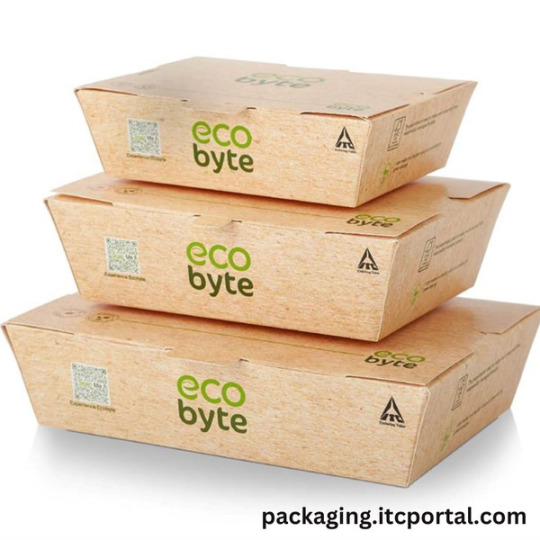
Designed for Convenience
The smart clamshell design is more than just stylish—it’s built for function. It provides a secure seal to maintain hygiene and makes opening and closing easy, whether you're stacking meals for delivery or serving up hot lunches on the go. With a 500 ml capacity and mush-resistant construction, it handles everything from salads to curries without getting soggy or falling apart.
Eco-Friendly, Business-Ready
Each pack comes with 25 containers, perfect for food startups, home chefs, or businesses transitioning to greener packaging. Measuring 138.5 x 113.5 x 40mm, they’re compact, sturdy, and ideal for takeaway, tiffins, and single-serve meals.
Why Choose Ecobyte?
Compostable & Biodegradable
Oil & Grease Resistant
Plastic-Free & Food Safe
Made in India for Indian Standards
Make the sustainable switch today. With Ecobyte's biodegradable clamshell lunch boxes, you're not just packaging food—you're protecting the planet, one meal at a time.
👉 For more information, contact us today!
#Ecobyte ITC clamshell lunch box#biodegradable lunch box#compostable food container#disposable lunch box eco-friendly#plastic-free takeaway container
0 notes
Text
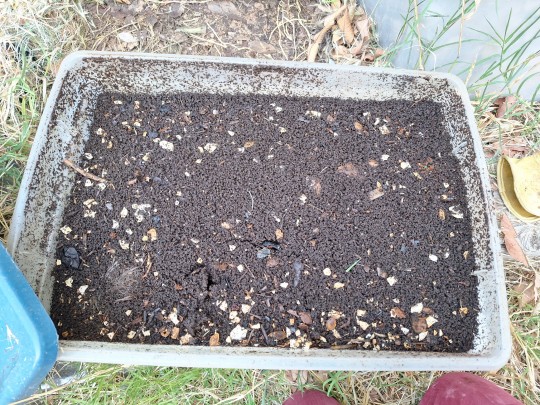
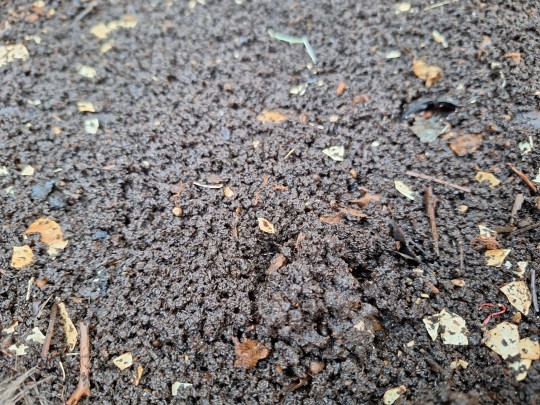
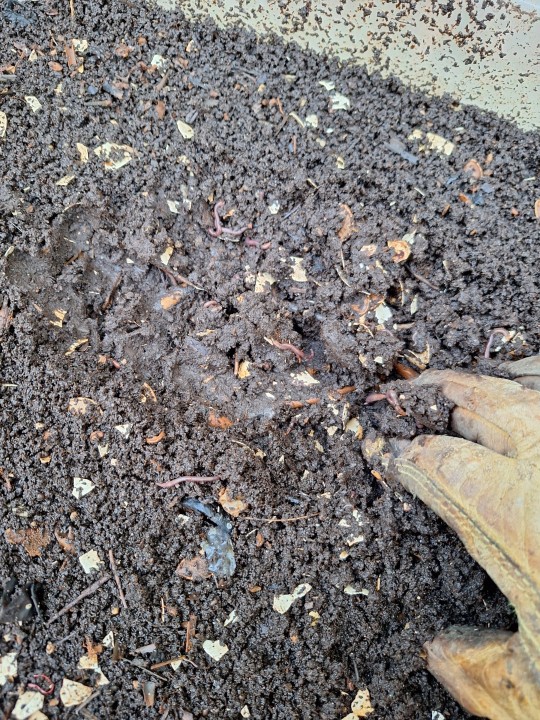
look how beautiful my homemade compost is❤️❤️❤️❤️❤️❤️❤️❤️❤️🥰💃🥳😍🪱🪱🪱
#compost#plant dad blogging#put food and garden waste in a big container -> when it gets full dig all the good stuff out of the bottom and put it in another container#this container was under another one and somewhat nestled into the dirt so it's extra settled and damp
10 notes
·
View notes
Text
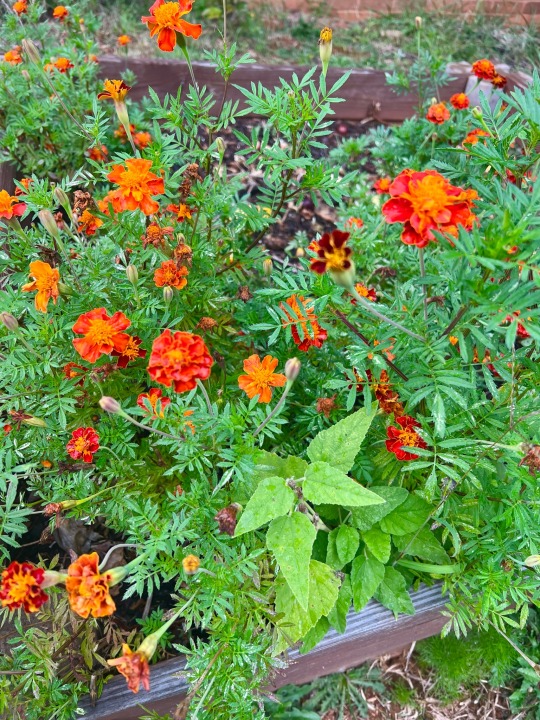
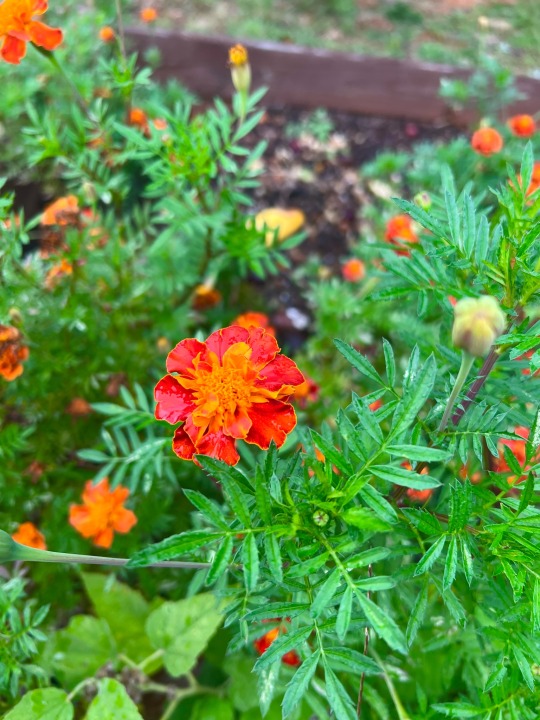
9/18/23 ~ Marigolds I didn’t even try to grow. Just seeds that fell into the compost garden from last years flowers 🌼 featuring one of my now FOUR Marshmallow Root plants 🙌🏻 I am going to try and collect seeds from the Marshmallow Root this year.
#indoor garden#container gardening#sustainable gardening#vegetable gardening#starting seeds#grow organic#grow your own food#organic gardening#tomato garden#green witch#herb garden#cooking herbs#medicinal herbs#marshmallow root#marigold#compost garden#raised beds
33 notes
·
View notes
Text
Eco-Chic & Functional: Cornstarch Food Containers! 🌽♻️
Say goodbye to plastic & hello to nature! Our plant-based containers are:
✨ The Ultimate Meal Prep Sidekick
• Made from 100% compostable corn starch
• Preserves food freshness with zero weird smells
• Microwave & fridge safe - heat/cool with confidence
💪 Built Smarter
• Reinforced ribbed base for ultimate stability
• Smooth edges + crush-resistant design
• Waterproof & grease-proof (no messy leaks!)
🍱 Perfect for:
Meal prep | Takeout | Picnics | Office lunches | Sustainable catering
Join the green revolution—one meal at a time! 🌱
#food containers#ecopackaging#zerowaste#sustainableliving#meal prep#compostable#plantbased#greenbusiness#ecofriendlyproducts#nomoreplastic
0 notes
Text
Vertical garden planter & composter: 7 Proven Ways to Stop Waste

You, staring into the soul-crushing abyss of your fridge’s crisper drawer: “Ah yes, the cilantro I bought for tacos has now achieved a liquid state. A sad, green ghost of its former self.”
We’ve all been there. The cycle of buying expensive herbs, using one sprig, and then watching them turn to slime is a special kind of pain.
What if you could break the cycle? What if your tiny balcony—currently serving as a graveyard for abandoned hobbies—could become a 50-plant organic farm?
Say hello to the undisputed champion of small-space sustainability: the vertical garden planter & composter.
This isn’t just a pot. It’s a whole ecosystem that solves every problem you’ve ever had with apartment gardening.
Problem: Your kitchen scraps go in the trash.
Solution: This thing has a built-in worm rave (less weird than it sounds) that turns your coffee grounds and veggie peels into black gold for your plants. You’re not just reducing waste; you’re creating free, organic fertilizer.
Problem: You have no space.
Solution: A vertical garden planter & composter thinks UP, not out. We’re talking a whole vegetable patch in just 4 square feet. Your balcony can finally live its best life.
Problem: You’re a lazy (or forgetful) waterer.
Solution: The best ones recycle their own water. It creates a super-charged "compost tea" and continuously feeds the plants. It’s the set-it-and-forget-it approach we all deserve.
Problem: Your back hurts from bending over pots.
Solution: It’s a garden at waist height. No kneeling, no groaning. Just pure, easy harvesting joy.
This is the ultimate hack for growing your own organic food, saving money, and finally using that patio for something other than storing a bike you swore you’d ride.
Ready to see how it all works and discover the undisputed champion of the vertical garden planter & composter world? We break down all 7 ways this thing will change your life.
(https://containergardeningebook.com/vertical-garden-planter-composter/)
#gardening#container gardening#apartment gardening#urban gardening#vertical garden#vertical garden planter & composter#garden tower#diy#sustainability#zero waste#grow your own food#plantblr#plants#balcony garden#small space gardening#how to garden#containergardening#gardeningtips#urbangardening#diygarden#gardeninghacks#containergardeningbooks#growyourown
0 notes
Text
Cornstarch Clamshell Boxes: The Eco-Friendly Revolution in Takeout Packaging
Plastic takeout containers might soon become a thing of the past—and it’s not just because of environmental guilt. It’s because smarter, greener, and better-designed options are taking over. One such standout? The Cornstarch Clamshell Box.
In a world where eco-conscious decisions define modern foodservice, clamshell containers made from renewable corn-based materials are turning heads and transforming takeout culture.
What Are Cornstarch Clamshell Boxes?
Let’s break it down. Cornstarch clamshell boxes are biodegradable food containers crafted from PLA or CPLA, bioplastics derived from fermented corn starch. Unlike plastic foam or PET trays, these boxes don’t linger in landfills for centuries. They’re designed to decompose under commercial composting conditions within 90–180 days.
They’re shaped just like traditional hinged takeout boxes—but with none of the toxic side effects.
And when sourced from trusted suppliers like Cornstarch Clamshell Box manufacturers, you get consistent performance and certification-compliant safety.
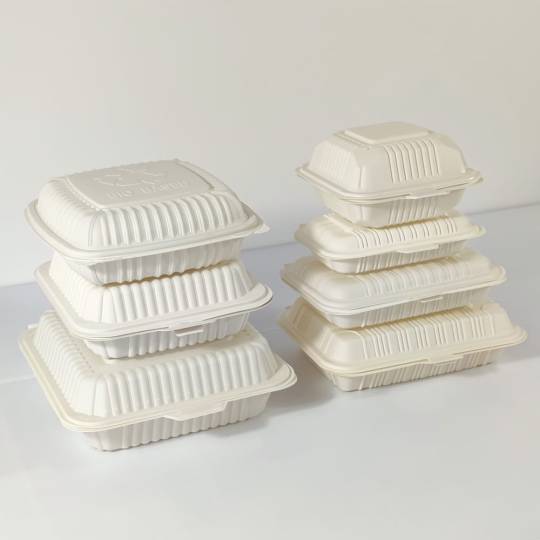
Why Restaurants and Cafés Are Switching in 2025
The reasons for the shift are more than just environmental. Here’s why businesses are replacing polystyrene and polypropylene containers with biodegradable corn starch packaging:
🌿 1. Plastic Bans Are Real—and Spreading Fast
The EU, India, and multiple U.S. states have outlawed single-use plastic food packaging.
Businesses that ignore these changes risk heavy fines or license revocation.
Compostable clamshells meet EN13432 and ASTM D6400 standards, qualifying as legal alternatives in regulated markets.
🧪 2. They’re PFAS-Free and Food-Safe
Unlike many paper-based containers that require chemical coatings, cornstarch clamshells are naturally grease-resistant. No “forever chemicals” required. That’s a major win for health-conscious consumers.
🔥 3. Heat-Resistant and Leakproof
These containers are built to handle real food—from hot rice bowls to saucy pastas. They maintain structural integrity, don’t collapse under steam, and won’t seep liquids after 15 minutes in the bag.
📦 4. They Look and Feel Premium
Smooth texture, matte finish, clean corners. These aren’t your average “eco” boxes. In 2025, packaging is as much about branding as it is about function. Cornstarch packaging upgrades the visual appeal of every meal.
Product Spotlight: 800ml Biodegradable Cornstarch Clamshell Food Box
If you're serving medium-sized portions or combo meals, the 800ml Biodegradable Cornstarch Clamshell Food Box is a perfect fit.
Ideal for salads, rice dishes, or meal kits
Leakproof, stackable, and microwave-safe
Fully compostable in industrial facilities
Neutral color tones to match minimalist branding
This box is a favorite among cloud kitchens, vegan cafés, and premium takeaway brands looking to reduce their carbon footprint without sacrificing style or function.
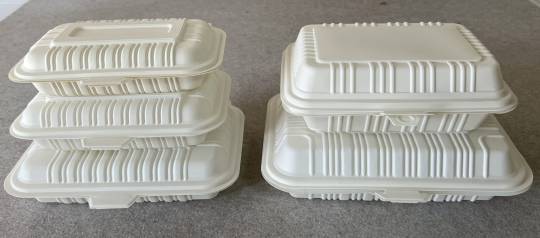
Composting, Explained
Many ask: Will this decompose in my backyard? Not always.
Cornstarch packaging typically needs industrial composting conditions—higher temperatures, humidity, and microbial activity—to break down efficiently. That’s why it’s important for cities and foodservice hubs to build out composting infrastructure alongside regulation.
Still, even if landfilled, cornstarch decomposes significantly faster than traditional plastics. And that’s a win in our book.
A Comparative Look: Cornstarch vs. Other Packaging Materials
Feature Cornstarch Clamshell Paper Containers PET Plastic Foam
Compostable✅ Yes (Industrial)✅ Some Types❌ No❌ No
Oil Resistance✅ Excellent⚠️ Needs coating✅✅
Heat Resistance✅ 100°C+ safe⚠️ Moderate✅⚠️ Can melt
PFAS-Free✅ Available❌ Often coated✅❌
Time to Biodegrade~3–6 months~2–5 months400+ years500+ years
Appearance (Brand Appeal)✅ Sleek/Modern✅ Varies✅ Glossy❌ Outdated
Cornstarch strikes the ideal balance of eco, performance, and presentation.
Ideal Use Cases for Cornstarch Takeout Containers
These aren’t just for health cafés. Here’s where cornstarch clamshells are winning in 2025:
Meal Prep Businesses – Durable, stackable, and portion-sized
Cloud Kitchens – PFAS-free containers for app-based deliveries
Salad Chains – Leakproof containers that work well with dressing
Eco Catering Services – Compostable presentation for events
College & Workplace Cafeterias – Large-scale switch to biodegradable lunch packaging
The versatility is unmatched. Whether hot or cold, dry or wet, cornstarch clamshells rise to the occasion.
Final Thoughts: It's Not Just Packaging. It's a Statement.
Packaging tells a story. In 2025, consumers are reading labels—and materials. They’re choosing brands that care.
By upgrading to Cornstarch Clamshell Box solutions, you're doing more than meeting policy requirements. You're:
Reducing landfill burden
Aligning with sustainability goals
Elevating your brand experience
Staying future-ready in a regulated world
Because when food leaves your kitchen, the container it’s in carries more than just your product—it carries your values.
#Cornstarch Clamshell Box#Biodegradable Cornstarch Packaging#Compostable Food Containers#Cornstarch Takeout Box#PFAS-Free Clamshell#Eco-Friendly Food Packaging#Biodegradable Hinged Food Boxes#Sustainable Takeout Packaging#Corn Starch Food Container Supplier#Compostable Clamshell Manufacturer
0 notes
Text
🌿 Serve Sustainably with Meraki Pack: Eco-Friendly Tableware for Modern Dining
Meet Meraki: Where Sustainability Meets Style
Meraki Pack is taking the packaging world by storm with its innovative bagasse tableware crafted from sugarcane—delivering renewable, compostable, and stylish alternatives to plastic disposables. Each piece—from bowls to trays—is designed with nature in mind, perfect for everyone from high-end caterers to eco-conscious households.
Why Bagasse?
Eco-conscious origins: Unlike petroleum-based plastics, bagasse is a renewable byproduct of sugarcane processing—no trees cut, no fossil fuels used
Compostable & safe: Fully biodegradable, these products naturally break down, reducing waste and closing the loop for sustainability
Product Spotlight: Simple, Functional, Beautiful
Meraki’s collection includes thoughtfully designed options that balance aesthetics and practicality:
150 mL Kiwi Bowl – Ideal for dips, nuts, or sauces
175 mL Mango Bowl – Eye-catching and perfect for snacks
180 mL Round Bowl – Multipurpose, subtle, and sustainable
Every item is sturdy enough for hot and cold fare, spill-resistant, and perfect for professionally catered events or casual home use.
Meraki in Action
Meraki Pack’s social platforms are buzzing with real-world usage:
“Always on the go?… With Meraki’s eco-friendly packaging, enjoy meals that are sturdy, spill‑proof…” ��This Earth Day… we’re committed to sustainable packaging that reduces waste and inspires eco‑conscious living.”
5 Tips for Embracing Eco-Friendly Tableware
TipDescription1. Match products to dining needsChoose bowls/trays by portion requirements—Meraki’s varied sizes serve different purposes beautifully2. Educate your consumersHighlight benefits like compostability and renewable sourcing to increase eco-awareness3. Brand collaborationCo-brand bowls for events, cafes, or corporate gatherings—they look great and do good4. Showcase via social mediaUser-generated photos build trust and demonstrate practical, stylish use5. Create compost stationsMake it easy for customers to dispose of products—offer instructions or partner with composting facilities
Join the Green Movement
Meraki Pack offers not just products, but a movement—toward packaging that doesn’t weigh down the planet. Whether you’re a caterer, restaurant owner, or event planner, Meraki Pack has tableware that:
🪴 Uses 100% sustainable sugarcane bagasse
🌍 Is fully compostable
🍽️ Stands up to hot, cold, and messy foods
Visit Now :- https://merakipack.com/
#eco-friendly tableware#sustainable packaging#biodegradable bowls#bagasse products#compostable food containers#sugarcane tableware#green packaging solutions#eco-conscious catering#plastic-free alternatives#Meraki Pack sustainability
0 notes
Text
How to begin a sustainable way of life
This is a draft of something I've been writing for a couple months. It is mainly focused on the culture of the USA. Feel free to repost or otherwise share, with or without credit.
Do not tell people what to do—help them do it!
Give the gift of relief from being forced to engage in society’s unsustainable ways of life.
“People need to eat more plant-based foods.” ->Talk about your favorite recipes, give others recipes, cook for them, and grow vegetables and plants in your garden and give them away as gifts.
“People need to repair their clothes.” -> Offer to repair others’ clothes, and teach people how to repair their clothes.
“People need to buy less clothes.” -> Give them old clothes that you don’t want, help them repair their clothes
“People need to buy less plastic stuff.” -> Learn to make things that can serve the same purpose, such as baskets, and give them as gifts. Let people borrow things you own so they don’t have to buy their own.
“People need to stop using leafblowers and other gas-guzzling machinery.” -> Offer to rake the leaves. You can use them as compost in your own garden.
“People need to be more educated about nature.”-> Learn about nature yourself. Tell people about nature. Be open about your love of creatures such as snakes, spiders, and frogs. Do not show awareness that this could be strange. You are not obligated to quiet down your enthusiasm for creepy crawlies to demonstrate awareness that it is weird. Point out at every opportunity how these animals are beneficial.
“People need to use cars less.” -> Offer rides to others whenever you must go somewhere. Whenever you are about to go to the store, ask your neighbor or your friend who lives along the way, “Is there anything you need from the store?”
You cannot control others’ behaviors, but you can free them from being controlled.
If you think to yourself, “But this would be so difficult to do!” ask yourself WHY? Why does your society coerce you into less sustainable ways of living, forcing you to consume excessively? After thinking about this, consider that it is less simple and easy than you thought to make more sustainable choices, so why would you judge others for not doing it?
Do not act alone—act with others!
Environmentally friendly behaviors that can be done alone, without collaborating with or consulting another person, are the least powerful of all. Whenever an “environmentally friendly” behavior is suggested, figure out “How can I give this as a gift?” or “How can I make this possible on the level of a whole community?”
“Personal choices” do not work because every single person has to make them individually. If you are focused on making your own personal choice, you are not focused on others. If you are not focused on others, you are not helping them. If nobody is helping each other, most people won’t be able to make the “personal choice.”
You inherently share an ecosystem with your neighbors
Start with your neighbors, the people physically close to you. You live on the same patch of land, containing roots from the same plants and trees. You can speak to them face to face without traveling, which means you can easily bring them physical things without using resources to travel.
Always talk to your neighbors and be friendly with them. Offer them favors unprompted and tell them about how your garden is doing. Do not be afraid to be annoying—a slightly annoying neighbor who is helpful, kind, and can be relied upon for a variety of favors or in times of need is a necessary and inevitable part of a good community. If you make the effort to be present in somebody’s life, they will have to put up with you on some occasions, but that is just life. We cannot rely on each other if we do not put up with each other.
Simply spending time with someone influences them for good
Every hour you spend outside with your neighbor is an hour your neighbor doesn’t spend watching Fox News. Every hour you spend talking with someone and interacting with them in the real world, eating real food and enjoying your real surroundings, is an hour you don’t spend only hearing a curated picture of what reality is like from social media.
Isolation makes it easy for people to become indoctrinated into extremist beliefs. When someone spends more time alone, watching TV, Youtube, or scrolling social media, than they do with others, their concept of what other people are like and what the world is like comes more from social media than real life. TV and online media are meant to influence you in a specific way. Simply restricting the access these influences have to yourself and others is helpful.
A garden is the source of many gifts
If you grow a garden, you can give your neighbors and friends the gift of food, plants, and crafted objects. This is one of the foundational ways to form community. When you give food, you provide support to others. When you give plants, you are encouraging and teaching about gardening. It is even better when you give recipes cooked from things you grew, or items crafted from things you grew. You can also give the gift of knowledge of how to grow these plants, cook these recipes, or craft these objects.
More on gift-giving
Some people are uncomfortable with receiving items or services as gifts. They want to feel like they are giving something back, instead of having obligation to return the favor hanging over them.
It can help to ask a simple favor that can be easily fulfilled. People generally like the feeling of helping someone else.
When you give someone a gift, it can help to say something like “Oh, I have too many of this thing to take care of/store/eat myself! Do you think you could take some?” This makes your neighbor feel like they are helping you.
When allowing others to borrow items, you might not get them back. Don’t worry about that. It just means the item found a place where it was needed the most. You can ask about the item if you think it might have been forgotten, and this can create an opportunity for a second meeting. But don’t press.
If the person you give to insists upon some form of payment, this is a good opportunity to negotiate a trade.
Ask to be given compostable or recyclable things
Ask your neighbor to save compostable scraps, biodegradable cardboard and paper products, and any other items that might be put to use. Use them in your own compost pile. Or, start a compost pile at the edge of the yard where you both can add to it. Remember that “wet” compost like vegetable and fruit bits needs to be mixed with twice as much of “dry” and “woody” compost like cardboard, leaves, small twigs, paper and wood bits.
Use the front yard for gardening
Overcome the cultural norm that the front yard is only decorative. Use the front yard for gardening so you can be seen by others enjoying your garden, and others can witness the demonstration of the possibilities of land. In the front yard, anything you do intentionally with your land can be witnessed. It also makes you a visible presence in your community.
Grow staple foods
Don’t just grow vegetables that cannot be the core component of a meal themselves. Grow potatoes, dry beans, black eyed peas and other nourishing, calorie-dense foods. Grow the ingredients of meals. You could even build a garden around a recipe.
Invite neighbors and friends over to eat food made from things you grew
Be sure to send them home with leftovers.
Grow plants for baskets
Containers are one of the fundamental human needs. If we had more containers, we wouldn’t need plastic so much. You can learn to make baskets, and to grow plants that provide the raw materials for baskets.
If someone rakes their leaves, ask to have the leaves
If you see someone putting leaves in bags, don’t be afraid to ask if you can have the leaves. More likely than not they will be happy to agree.
Collaborate with neighbors to plant things in the no-man’s-land of the property line
In the border land between your neighbor’s yard and your yard, it is almost always just mowed grass because no one can plant anything without it affecting their neighbor. But these border lands add up to a lot of space. It would be much better if you talked to your neighbor about what would be nice to plant there, and together created a plan for that space.
Give others the freedom to wander
Make it clear that you will not get mad if the neighbor’s kids play in your yard or run across it. Invite the neighbors onto your land as much as possible. Tell them they are allowed to spend time in a favored spot whenever they would like.
The power of the hand-made sign
If there is a yard sale, you always know about it because of the hand-drawn signs placed around. Therefore, a cookout or unwanted item exchange can be announced the same way. In rural areas I have seen hand-made signs that say: FIREWOOD or WE BUY GOATS or EGGS. This is one of the few technologies of community that remain in the USA. If someone who looks to buy and sell can put up a hand-made sign, why shouldn’t you?
Religious people or people with strong political opinions like to put signs everywhere. If they have the confidence and courage to do so, why shouldn’t you?
So if there is a message you would like everyone to see, use the simple power of the hand-made sign. Proclaim “BEE FRIENDLY ZONE!” above your pollinator garden with all the confidence of a religious fundamentalist billboard. Announce to the world, “VEGETABLES FREE TO ALL—JUST ASK!” “WE TAKE LEAVES—NO PESTICIDES.” Instead of YARD SALE, or perhaps in conjunction with YARD SALE, you can write, PLANT EXCHANGE or SEED SWAP or CLOTHING SWAP. Who can stop you?
Someone has to do it for society to change
Some of these ideas might be eccentric, strange, or even socially unacceptable, but there is no way to change what is normal except to move against it. Someone has to be weird. It might as well be you.
15K notes
·
View notes
Text
Eco-Friendly Bagasse Clamshell Lunch Box – Premium Quality

Discover the eco-friendly solution for your takeout needs with Greenwich Packaging's Premium Bagasse Clamshell Lunch Box. Made from sustainable bagasse, these 5x7 inch boxes are designed for durability and convenience, perfect for restaurants, catering services, and meal prep. Each pack contains 50 clamshells, ideal for serving a variety of dishes while minimizing your carbon footprint. The compostable material ensures a greener option without sacrificing quality or performance. Choose our premium lunch boxes for an eco-conscious choice that supports a sustainable future. Elevate your packaging today!
#Bagasse clamshell#eco-friendly packaging#sustainable lunch boxes#compostable food containers#takeaway boxes#Greenwich Packaging#premium clamshells#environmentally friendly#food service supplies#biodegradable packaging.
0 notes
Text
#biodegradable products#biodegradable plates#bagasse plates#sugarcane plates#compostable plates#sugarcane bagasse plate#sugarcane disposable plates#sugarcane pulp plates#biodegradable food containers#eco friendly disposable plates#biodegradable containers
0 notes
Text
Choose the epitome of sustainability with our eco-friendly food packaging in philadelphia. At Eco Pliant, we bring you a curated selection of environmentally conscious packaging options, designed to reduce your ecological footprint without compromising on quality or style. Make the eco-conscious choice for your restaurant in Philadelphia and join us in paving the way for a greener and more sustainable future. visit:https://ecopliant.com/
#eco friendly food containers in philadelphia#compostable packaging solutions in philadelphia#eco food packaging in philadelphia#eco-friendly food packaging in philadelphia#eco friendly food packaging in philadelphia
0 notes
Text
Ecobyte ITC Clamshell Lunch Box: A Practical and Eco-Friendly Choice for Takeaway Meals
With growing awareness around environmental impact, choosing sustainable food packaging is more important than ever. The Ecobyte ITC Clamshell Lunch Box (500 ml) offers an excellent option that combines convenience with eco-consciousness.
These lunch boxes are made from FSC-certified wood, sourced responsibly from forests managed with sustainability in mind. Instead of traditional plastic coatings, Ecobyte uses a special BioSeal compostable lining that prevents oil and grease from leaking, keeping food fresh and packaging sturdy—all while being fully biodegradable.
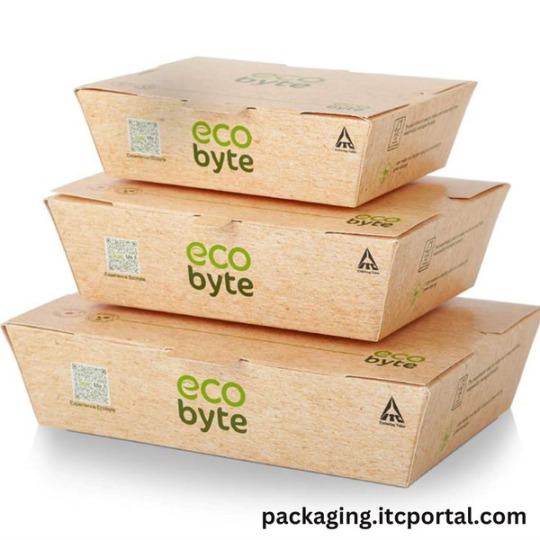
Designed with a handy clamshell shape, these containers are easy to open and close, promoting hygienic handling and reducing spills. With a 500 ml capacity, they suit a variety of dishes, from snacks to full meals. Plus, they meet the strict food safety and sanitation standards required by the food service industry.
Sold in packs of 25, these compostable lunch boxes are ideal for eco-friendly restaurants, caterers, and individuals who want to reduce their environmental footprint without compromising on practicality.
Choosing the Ecobyte ITC Clamshell Lunch Box means opting for a greener alternative to conventional plastic containers—supporting a cleaner planet while enjoying hassle-free meal packaging.
👉 For more information, feel free to contact us anytime!
0 notes
Text

RECYCLING AND COMPOSTING PROGRAMS
Recycling and composting programs are crucial for any sustainability plan — and those plans are more widespread than ever. Nearly 90 percent of the business leaders surveyed in a Deloitte study said they invest in sustainable resource management, with half of them citing the lower cost of waste reduction, recycling, and composting as the top driver for these actions. Those companies didn’t have to develop their programs alone; help is available. If you’re looking for ways to help fund existing institutional recycling or composting efforts in the United States — your first stop will probably be the Environmental Protection Agency (EPA). But assistance for sustainable materials management in the U.S. doesn’t stop at the federal level. States also provide resources that can help companies and institutions succeed with their green materials management initiatives. Additionally, This-Element is equipped to assist in the development of sustainable procurement programs for recyclable and compositable disposable food & beverage packaging. Contact us today for more information [email protected]
0 notes
Text

5/12/24 ~ Random Squash/Zucchini/Cuke? growing in my compost garden 👩🏻🌾🤗
Idk but it’s thriving 🌼
#zucchini#squash#growing cucumbers#cucumber#vegetable gardening#grow food not lawns#grow food#indoor garden#sustainable gardening#container gardening#starting seeds#growing food#plant life#plant mom#veganuary#homesteading#compost garden#compost
9 notes
·
View notes
Text
Northwestern University researchers have developed a new water- and oil-resistant material that could become a safe, viable replacement for harmful plastics and toxic per- and polyfluoroalkyl substances (PFAS) in food packaging. Derived from graphene oxide, the material is non-toxic, environmentally friendly and affordable. When applied to paper-based food and beverage packaging, the material not only provides exceptional barrier properties but also significantly enhances the product's overall strength. This could mean an end to flimsy paper plates and soggy takeout containers. After use, packaging treated with the material can be readily composted or recycled—closing the loop on a truly sustainable solution.
Continue Reading.
467 notes
·
View notes
Text
Grow Vegetables Small Space: 13 Amazing Tips! (Yes, Even if Your "Garden" is a Shoebox)
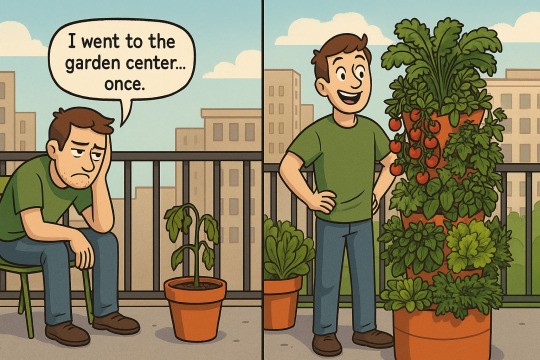
Alright, let's be real. Your current "garden" situation is probably: a) A single, very judgmental succulent. b) A windowsill full of good intentions and... dust. c) A balcony so small, your plants would need to file for joint custody. d) All of the above, plus a shoebox you swear you'll turn into a planter one day. 🥲
If you're nodding along, feeling personally attacked, and dreaming of fresh veggies but have approximately zero (0) actual space – WELCOME, YOU'RE MY PEOPLE.
But what if I told you that your tragically tiny patch of urban despair (or that very shoebox!) could actually... grow food? Like, real, edible, "I-made-dis" food? 🤯
Feast your eyes, my fellow space-challenged comrades, upon 13 genuinely amazing (and surprisingly NOT impossible) tips on how to grow vegetables in very small space. We're talking balconies that are basically just wide windowsills, doorsteps that have seen better days, and yes, even the aforementioned shoebox. 🌱✨🍅
Picture it:
Snipping fresh herbs for your gourmet ramen like a culinary god.
Tiny tomatoes that taste like sunshine, not disappointment.
The sheer, unadulterated POWER of presenting a single, perfect radish to your roommate like it's the Hope Diamond. "MARVEL AT MY CREATION."
Tired of your plants having more drama than a reality TV show? Ready to transform your microscopic domain into an actually productive (and hilarious) micro-garden?
➡️ CLICK HERE to unlock all 13 life-changing secrets and finally become the tiny garden overlord you were always meant to be: https://containergardeningebook.com/grow-vegetables-small-space/
Go on, your future self (who is probably eating a tiny salad made with homegrown lettuce) will thank you.
(Now, if you need me, I'll be serenading my window box carrots. They appreciate the effort.)
#small space gardening, #container gardening #how to grow vegetables, #plantblr, #gardening tips, #urban gardening, #apartment gardening, #tiny garden, #grow your own food, #send help and compost, #my plants are my children, #vegetable garden, #shoebox garden challenge, #diy garden, #plantcore, #help my balcony is tiny, #i believe in tiny tomato supremacy, #gardening for millennials (and everyone else tbh)
#small space gardening#container gardening#how to grow vegetables#plantblr#gardening tips#urban gardening#apartment gardening#tiny garden#grow your own food#send help and compost#my plants are my children#vegetable garden#shoebox garden challenge#diy garden#plantcore#help my balcony is tiny#i believe in tiny tomato supremacy#gardening for millennials (and everyone else tbh)
0 notes